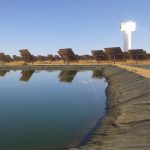Understanding the Applications and Advantages of Geotextile Fabric in Modern Engineering
In the vast landscape of civil engineering and construction, there exists a versatile and highly beneficial material that often goes unnoticed despite its significant impact: geotextile fabric. Geotextiles, a type of permeable textile material, have been instrumental in revolutionizing various engineering and construction practices due to their multifaceted applications and benefits.
Unveiling the Essence of Geotextile Fabric
What is Geotextile Fabric?
Geotextile fabric is a synthetic material made from polymers like polyester or polypropylene. It is designed to serve as a permeable barrier, offering characteristics that aid in reinforcing, filtering, separating, protecting, and draining in various civil engineering and construction applications.
Applications in Diverse Spheres
Soil Erosion Control
One of the primary applications of geotextile fabric is in soil erosion control. Placed in areas susceptible to erosion, these textiles prevent the loss of soil by stabilizing slopes and providing a barrier against the impact of water flow.
Road Construction
In road construction, geotextile fabrics are used to enhance the lifespan and performance of pavements. Placed between subgrade and gravel layers, they aid in distributing loads, reducing rutting, and preventing the mixing of different materials, thus ensuring a more durable and stable road surface.
Drainage Systems
Geotextiles are widely utilized in drainage systems to facilitate water flow while preventing the mixing of soil particles. Their permeability allows water to pass through while retaining soil, preventing clogging and ensuring efficient drainage.
Landfill Engineering
In landfill engineering, geotextile fabrics are deployed as liners to prevent contaminants from leaching into the surrounding environment. They act as a barrier to contain waste while enabling the passage of liquids through drainage systems.
Advantages of Geotextile Fabric
Strength and Durability
Geotextiles possess high tensile strength, enabling them to withstand heavy loads and harsh environmental conditions. This durability ensures long-term stability in various applications.
Versatility
The versatility of geotextile fabric is a key asset. Available in various forms—woven, non-woven, or knitted—these materials can be tailored to suit specific project requirements.
Environmental Benefits
Geotextiles often contribute to sustainable practices in construction. By preventing soil erosion, aiding in drainage, and controlling contaminants in landfills, they play a role in environmental conservation.
Cost-Effectiveness
The use of geotextile fabrics can reduce construction costs by prolonging the life of structures, minimizing maintenance needs, and decreasing the requirement for additional materials.
Conclusion
Geotextile fabric stands as an unsung hero in the realm of civil engineering and construction. Its multifunctional nature, cost-effectiveness, and environmentally friendly characteristics make it an invaluable tool in modern engineering practices. As technology advances and sustainability becomes increasingly critical, the utilization of geotextile fabrics is set to continue growing, promising innovative solutions for a myriad of engineering challenges. Embracing and harnessing the potential of this unassuming material will undoubtedly shape the future of construction and infrastructure development.
Through its varied applications and numerous benefits, geotextile fabric showcases the power of innovation in engineering—a testament to how a simple material can have a profound impact on the built environment.
By integrating this unassuming textile into construction practices, engineers and builders are not just shaping structures; they are shaping a more sustainable and resilient future.






